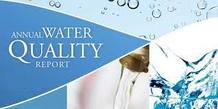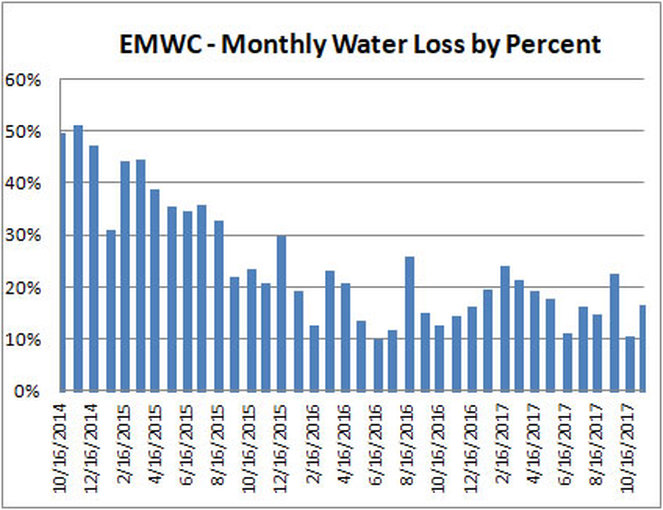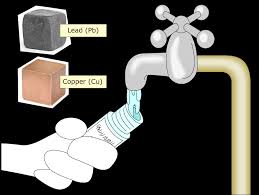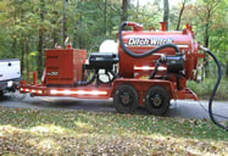 Prior to the annual meeting held every May, we send our members a summary newsletter recapping prior-year operations, current year projects, and notes of interest.
0 Comments
 EMWC's Board of Directors recently approved the budget for 2018. Under the new budget, water rates will increase by $0.15 per 1000 gallons. The new minimum monthly bill will be $29.86 (based on 3000 gallons). The largest contributor to the higher rate is a $0.40 per 1000 gallons increase in the cost of water purchased from the City of Bloomington Utilities (CBU). Partially offsetting these higher costs is a budget projection that benefits from improved efficiency in overall operations (see news item below on water loss). EMWC's information on rates and the 2018 Tariff can be found at Water Rates.
 East Monroe Water Corporation (EMWC) buys all of the water we sell to our members from the City of Bloomington Utilities Department (CBU). CBU pumps all of its water from Monroe Reservoir and treats it before releasing it to its customers. Federal guidelines require the state of Indiana to issue Source Water Assessments (SWA) in order to identify significant or possible sources of contamination. Information concerning Monroe Reservoir’s SWA is available by contacting City of Bloomington Water Quality Office. All of Monroe Reservoir’s water is sourced from rainfall which has traveled either over or through the ground to the reservoir. On its journey to the reservoir, the water dissolves naturally occurring minerals, and possibly radioactive materials, as well as substances resulting from animal or human activity. Contaminants that may possibly be found in surface water include: microbial contaminants derived from biological wastes or from soil activity; inorganic contaminants (i.e. salts and minerals that can be naturally occurring or the result of industrial or agricultural activity); pesticides and herbicides from agricultural or residential usage; organic chemical products resulting from industry, septic systems, and runoff water from such commercial as gas stations; and naturally occurring radioactive materials. Treated water may also contain contaminants resulting from the disinfection process. Chlorine and other compounds used as disinfectants also interact with organic materials to produce small amounts of byproducts (haloacetic acids and trihalomethanes) that may pose a health risk when consumed over long periods of time. The following table lists results for EMWC’s water quality testing for 2016 as conducted by both EMWC and by CBU.  Recent events in Flint, Michigan have resulted in a renewed focus on lead and copper contamination of public water supplies. Many of the older homes in Flint were connected to their meter with lead water pipes, and a change to a more acidic water supply was the apparent cause for some of this lead to be "leached" into the water. EMWC is not aware of any homes on our system that use lead pipes for their water supply. However, we are only responsible for our side of the meter, and do not have detailed information about pipes running from the meter to the house. Many of our members do have copper plumbing, and sometimes the solder used contains small amounts of lead. Because of this, we do test for lead and copper at a number of homes throughout our system every three years. Please note that our lead and copper test results have never exceeded the EPA standards for safe drinking water. See our most recent Water Quality Report.  EMWC recently purchased a new machine that will improve our ability to make repairs and installations safer, quicker, and with a much lower impact on surface damage. The new "hydrovac" uses a high pressure water jet to surgically excavate the ground, and a large volume vacuum tank to actively remove the spoils. Larger water companies have been using this technology for many years, but recent improvements in the trailer-mounted versions and lower prices have provided us this opportunity to improve our service. Although we still have to use a backhoe for certain types of work, you will probably see the big orange DitchWitch trailer more frequently. |

EMWCRead about the latest news and updates here. Categories
All
Archives
January 2024
|









 RSS Feed
RSS Feed